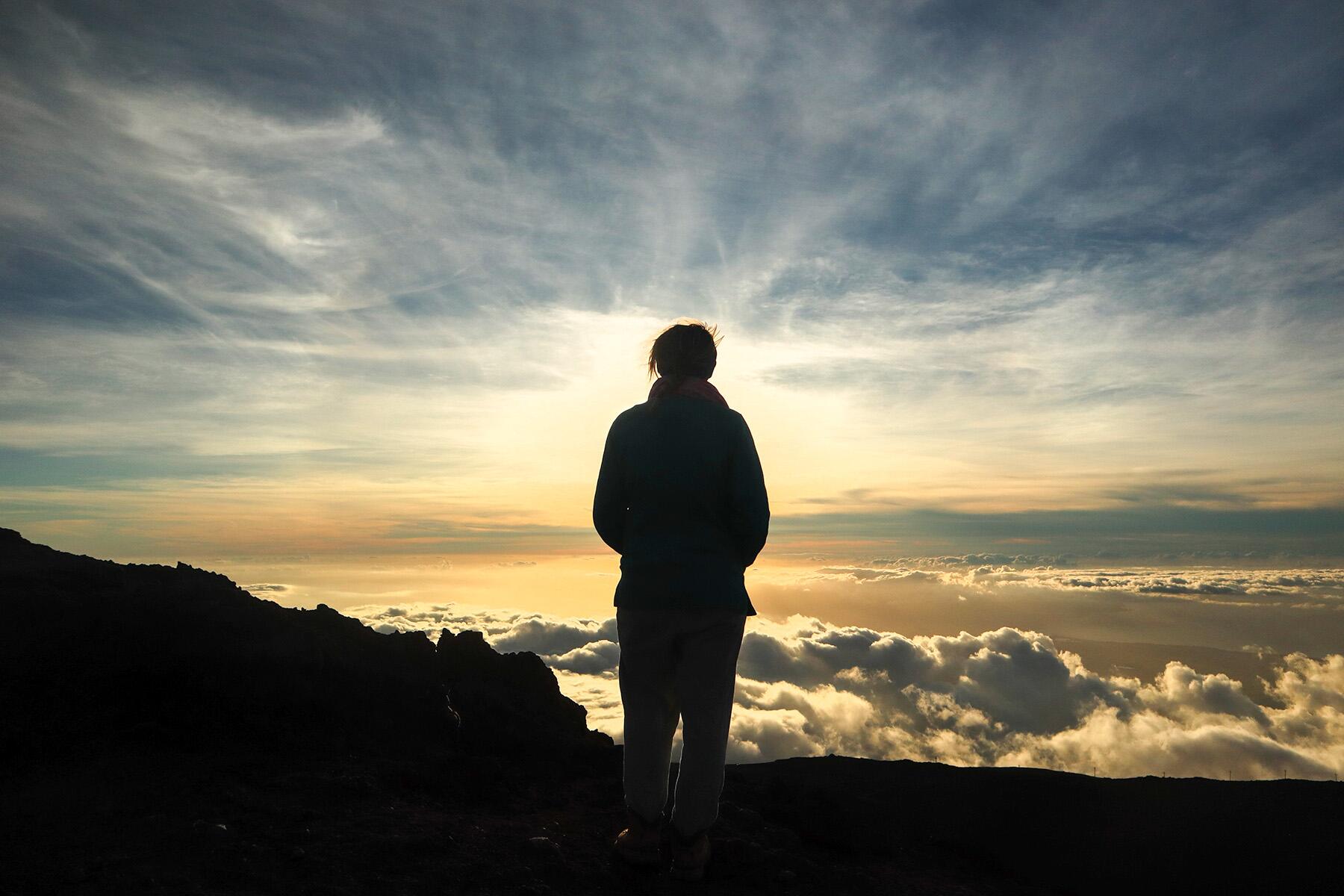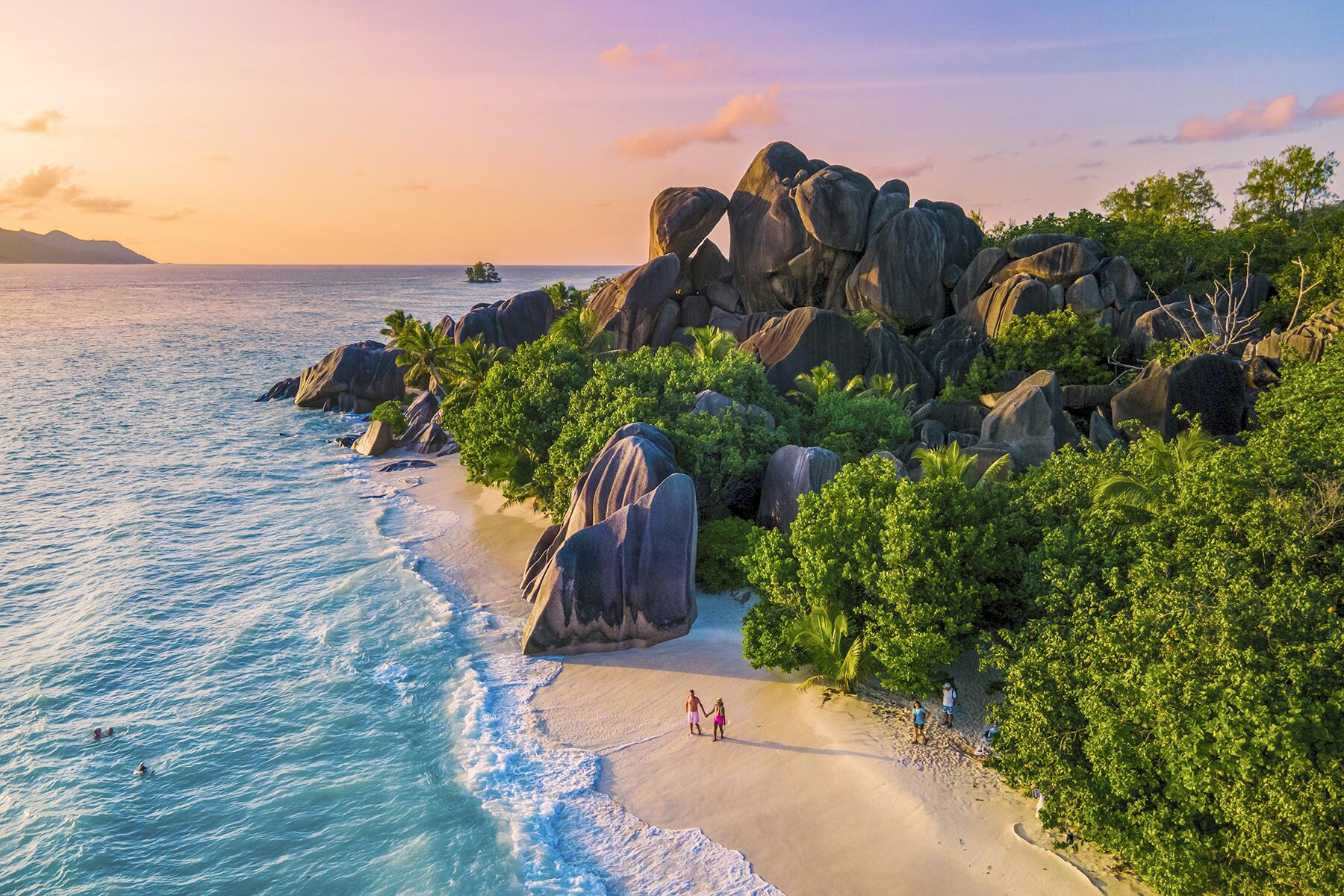Eat, pray, love is not a to-do list.
The air turned chilly as we climbed into British Columbia’s Coast Mountains, riding through pine forests and thickets of ripe huckleberries. It was my second day horse-packing steep trails with a group of women from across the globe: Just ahead, I saw our Canadian guide’s braid swinging across her denim coat, and behind me rang my tent-mate’s big Australian laugh.
Exploring with these women is amazing, I thought. But why did it take me so long?
For more than 20 years, I’ve done much of my traveling by myself. I relish the feeling of self-reliance in an unfamiliar place. I took my first solo international flight at 16 years old, and traveling alone became a through-line that outlasted my partners, careers, and zip codes. Along the way, I stalked kiwi birds on a 10-day hike around New Zealand’s Stewart Island and taught myself to ride a motorbike for a road trip through Laos. In Borneo, I peeled leeches off my bloody ankles and tipped up shots of oily rice whiskey.
And in the last 10 years, I cheered as stories about women traveling alone began to trend. A slew of op-eds were preaching the joys of solo adventure, and I joined the chorus with a piece on the pleasures of one-woman wilderness camping.
“I feel bad,” she told me. “I don’t want to travel by myself anymore—it’s like that means I’m no longer adventurous.”
Those stories felt like a powerful retort to a sexist, paternalistic culture, one full of condescending warnings to women about the dangers of the world. Despite my spreading crow’s feet and years of travel experience, people still feel annoyingly free to tell me how foolish I am: “You better be carrying a gun,” said a stranger on the Appalachian Trail. “You never know who you’re going to meet out here.” I hated the false premise that staying home was safer—after all, intimate partner violence is a bigger problem for American women than wilderness run-ins.
Recommended Fodor’s Video
All those things are still true, but I’ve dropped out of the chorus recommending solo travel for all. That change started on a long drive through the New Hampshire mountains last summer, when a good friend recounted her terrifying experience of sexual assault while traveling alone internationally. “I feel bad,” she told me. “I don’t want to travel by myself anymore—it’s like that means I’m no longer adventurous.”
After our talk, I took a second read through the stories about solo travel. As I tried to see them through my friend’s eyes, I chafed at headlines insisting that every woman should travel alone, the assurance that booking a plane ticket for one will be the best thing to happen to you. If that chorus of advice left my friend feeling excluded, I thought, maybe it’s not very empowering after all.
It’s one thing to remind readers that solo travel is an option and a possibly rewarding one. For me, the problem arises when that message becomes a mandate. It seemed that what started as an affirmation had morphed into one more benchmark for women to strive towards, or fall short of.
And it’s not only that. Later that summer, something shifted as I grazed ripe huckleberries and scanned for grizzly bears in the BC mountains. In all my years of traveling alone, I’d never had the experience of tackling a big challenge with a group of other women—through our days and nights of wood smoke, horse sweat, and mountain air, I began to feel that I’d missed out on something profound.
As a teenager hungry to see the world, I devoured books about lone adventurers like Joshua Slocum and Edward Abbey. With those men as role models, I came to believe that strength came from going it alone, not from the support of a community of friends. When I set out on my own, it was what I wanted more than anything else: It was also a dream molded by a culture that reveres individualism above all else.
Many of us are raised to excel–or fail–on our own.
Meanwhile, America is suffering from what some scientists call an epidemic of loneliness. Social isolation shortens life spans, and may play a role in cognitive decline. More Americans live by themselves than ever before, and by all measures, Americans simply interact less often with other people than they used to. It’s easy to see why isolation thrives in a country obsessed with myths about striving individualists; many of us are raised to excel–or fail–on our own. Going it alone is simpler, too, requiring none of the compromise and complication of dealing with other people.
It’s one thing to remind readers that solo travel is an option and a possibly rewarding one…the problem arises when that message becomes a mandate.
One way to disrupt that trend is leaning into shared experiences, whether you’re creating a household, booking a flight, or splitting a tent (like I did in the British Columbia mountains). While group travel isn’t always easy, it’s an act of collaboration that requires empathy and flexibility; I’ve come to believe those skills nurture a more resilient world than self-reliance alone.
If you ask me whether women can travel alone, I’ll always say the same thing: Of course. Do it if that’s what you crave, but remember that traveling alone doesn’t make you any more adventurous, any more of a “real” traveler. And as I pull out the map to plan my own next adventures, I hope to share those experiences with others, especially women. These days, I’m looking forward to the challenges that only companionship can bring.




